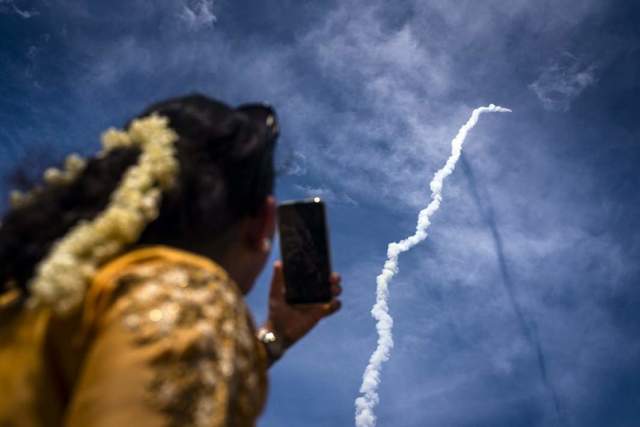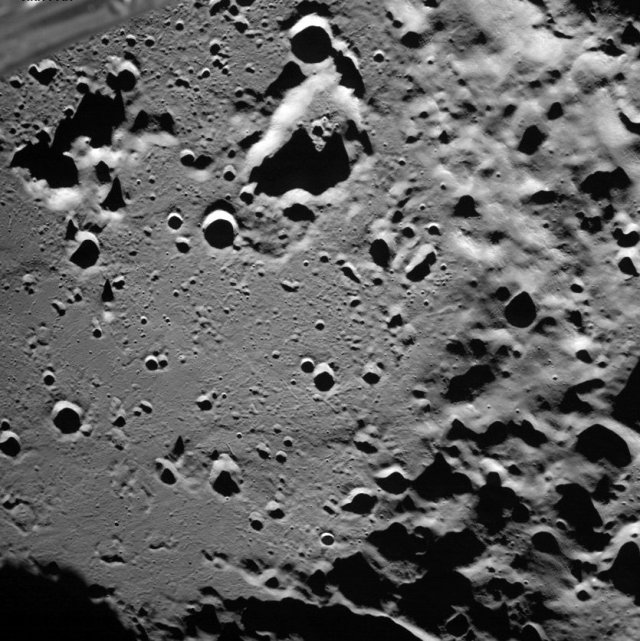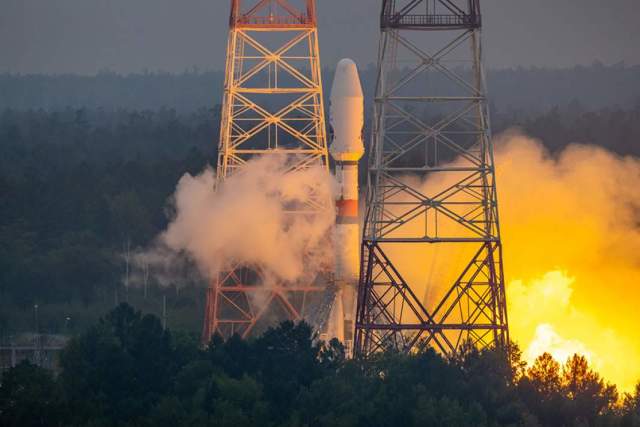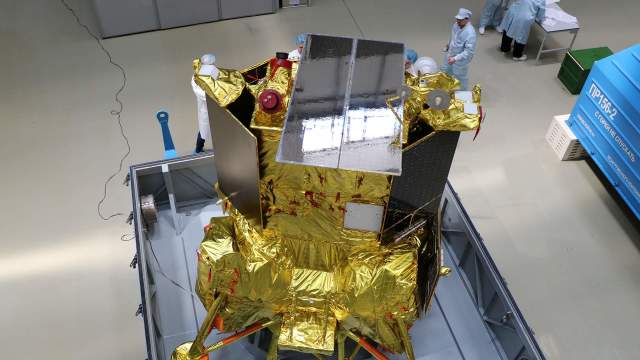And will the death of the device affect the implementation of Russian satellite research programs
The reason for the death of Luna-25 could be flaws in the flight software caused by the haste at the stage of its preparation in the desire to get ahead of the Indian station Chandrayan-3, two sources of Izvestia in the space industry said. The leadership of the Space Research Institute of the Russian Academy of Sciences offered to postpone the launch of Luna-25, but was refused, one of our interlocutors said. On August 20, Roscosmos officially confirmed the loss of the automatic station. The preliminary cause of the emergency situation is called the incorrect strength of the pulse set for the transfer of the device to the pre-landing orbit. As a result, the station fell to the surface of the moon. Whether this will affect the implementation of the Russian lunar program is in the material of Izvestia.
Haste hurt
The automatic station "Luna-25" crashed due to flaws in the flight software. They, in turn, could have been caused by a rush at the preparation stage in the desire of the officials — curators of the Russian lunar program to get ahead of the Indian Chandrayan-3 station. Two sources in the space industry told Izvestia about this.
The launch of Chandrayan-3 took place on July 14 — almost a month earlier than Luna-25, which started on August 11. Nevertheless, the Russian device was supposed to land on August 21, and the Indian one — only two days later. This was explained by a more efficient flight path.

Launch of a carrier rocket with an automatic station "Chandrayan-3" to the Moon, India, July 2023
Image source: Photo: TASS/EPA/IDREES MOHAMMED
— The most likely cause of the accident is a software error. There was already such an example when in 2017, when launching the Meteor-M spacecraft, they programmed the turn of the upper stage after separation in the wrong direction," a source in the space industry shared his opinion with Izvestia.
Representatives of the Space Research Institute of the Russian Academy of Sciences, which was responsible for the development of scientific onboard instruments, at one of the meetings announced the need to postpone the launch of Luna-25, another source told the publication in Roscosmos. According to him, the scientists motivated the request by the fact that additional software checks are needed. At the same time, the scientific director of the Institute Lev Zeleny was ready to take full responsibility for the decision on himself. However, the scientists were refused.
Official statement
Roscosmos confirmed the death of the Luna-25 automatic lunar station on August 20. It occurred as a result of an attempt to transfer the spacecraft from an intermediate lunar orbit at an altitude of about 100 km above the surface of the Moon to a lower pre-landing orbit at an altitude of about 18 km.
"In accordance with the flight program of the Luna-25 automatic station, on August 19, an impulse was provided for the formation of its pre-landing elliptical orbit. At about 14:57 Moscow time, the connection with the automatic station was interrupted," the official message posted on the Roscosmos website says.

A picture of the south polar crater Zeeman on the far side of the Moon, taken by the automatic station "Luna-25", August 17, 2023
Image source: Photo: RIA Novosti/Roscosmos Press Service
Measures to search for Luna-25 and attempts to contact her, undertaken within a day after the incident, did not yield results.
"According to the results of the preliminary analysis, due to the deviation of the actual pulse parameters from the calculated ones, the automatic station moved into an uncountable orbit and ceased to exist as a result of a collision with the surface of the Moon," Roscosmos reported.
An interdepartmental commission is being formed to find out the reasons for the loss of Luna-25.
Recycled in vain
The impulse that was supposed to correct the flight path of the automatic station turned out to be 1.5 times higher than necessary, Natalia Vedeneeva, a scientific observer of Moskovsky Komsomolets, reported with reference to her sources. As a result, the station "could enter an unclosed descent orbit, that is, direct fire at the moon," she suggested.
Ilya Ovchinnikov, a specialist in spacecraft and the author of the thematic Telegram channel, agrees with this version.
Automatic station "Luna-25" together with the upper stage "Frigate" in a horizontal position in the assembly and test building of spacecraft at the Vostochny cosmodrome
Image Source: Photo: TASS/Roscosmos Media/Natalia Berezhnaya
— The engines worked out more than necessary. Such a situation can occur on any launch vehicle, upper stage or spacecraft. What caused the emergency situation — programs, sensors or speed—setting equipment, it should be determined by specialists based on the results of the commission's work," the expert explained.
Influence on further exploration of the Moon
For the development of Russian cosmonautics, it is extremely important to objectively deal with the causes of the accident and take effective measures to avoid their recurrence in the future, experts stated. Personnel decisions will also depend on the conclusions of the interdepartmental commission being created, the source of Izvestia in the space industry is sure.
— Considering that Luna-25 and subsequent expeditions to the Earth's satellite are, in fact, a national project, it is possible that one of the deputy heads of Roscosmos will suffer. But it is more likely that someone from the second-level managers at the enterprises involved in the creation of the station will be declared responsible," the expert suggested.
At the same time, he stressed that the incident will not affect the Russian vector of lunar exploration, because the creation of the next "Luna-26", "Luna-27" is already prescribed in the Federal Space Program for the coming years.

Photo: TASS/Roscosmos Media/Natalia Berezhnaya
Image source: iz.ru
— This is not a collapse, we just need to continue working. If there is a prepared flight product at some stage, then you need to repeat the mission. If there is no such possibility, then it is necessary to transfer scientific research not implemented on Luna-25 to the next expeditions," Ilya Ovchinnikov also agreed.
He explained that the next Luna-26 mission will operate in the orbit of the Earth's satellite in 2027. She will conduct remote sensing of its surface. Then in 2028, as part of the Luna-27 mission, a Russian lunar rover will operate on the surface.
The flight of Luna-25 was still not useless, Ilya Ovchinnikov stressed. In particular, the station carried out a set of changes in the satellite's orbit. In particular, gamma-ray and neutron fluxes from the lunar surface were measured, and parameters of the circumlunar space plasma and the gas-dust exosphere in the circumlunar orbit were obtained.
Andrey Korshunov


